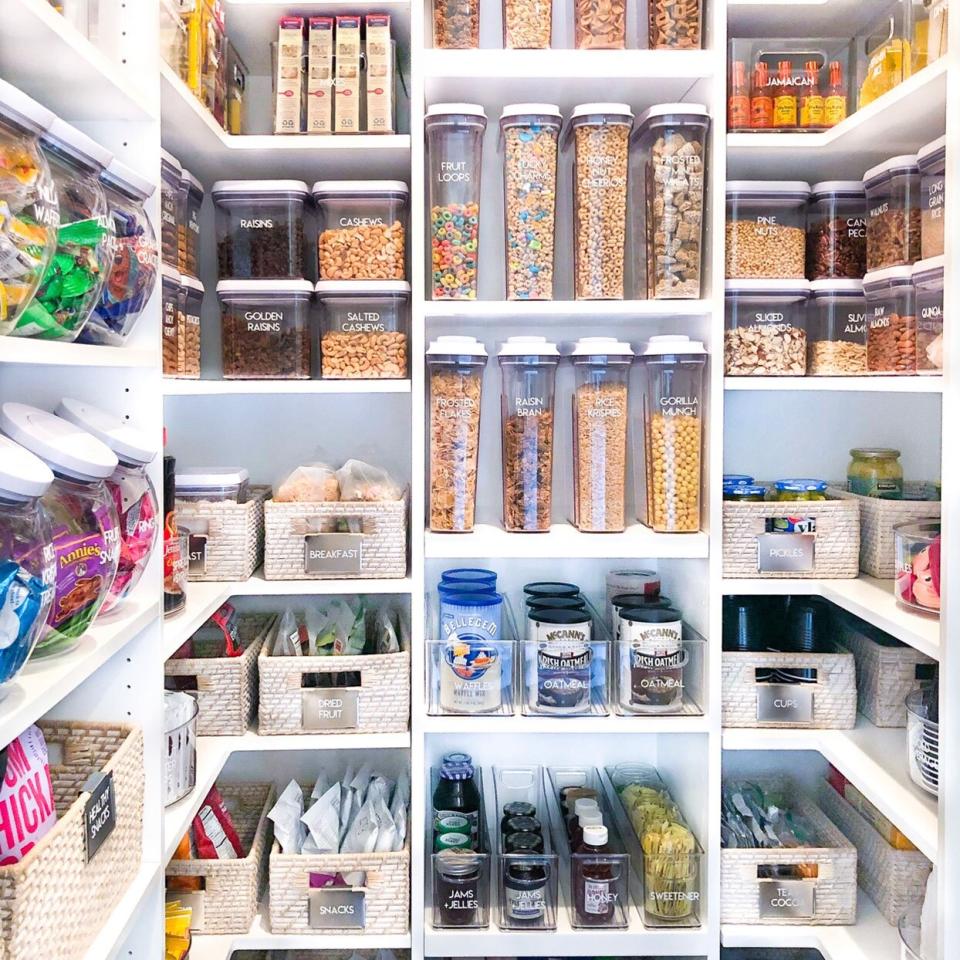5 Expert Tips to Have the Most Organized Pantry Ever—According to The Home Edit
OK, we confess to being a tad obsessed with organization now, thanks to Clea Shearer and Joanna Teplin, co-founders of The Home Edit, a personal organizing company. They've worked their declutter genius for the likes of Reese Witherspoon and Eva Longoria. And now they're setting their sights on your pantry. Here, their 5 steps for total transformation. Prepare to get to work ... and be wowed

Home Edit
Step 1: Empty
"When organizing your pantry, you must remove everything from the shelves. This will give you a chance to check expiration dates and take stock of your items so you can decide on a containment system (see Step 3) that will work best for you." —Clea
Step 2: Categorize
"First, group your items: Dinner, Breakfast, Snacks, Baking, Spices, etc., and then create a broad system of categories based on what you have. If you get too specific (snacks is fine, but crackers is too particular), your pantry will be harder to maintain—and unpacking groceries will become a nightmare." —Joanna
Step 3: Contain
"Every pantry needs some sort of containment system. Figure out what belongs in bins and what deserves a canister or turntable. Here's what we recommend:
"Your favorite nuts, dried fruit and dry ingredients are great canister candidates. Go for clear ones, so you can see your items and tell when you're running low.
- 9.99-14.99 BUY IT
"Boxes of crackers, bags of chips, and cereal your children talked you into getting 'just this once' are better off in bins so they can be easily swapped out. Bins also create a larger containment system to ensure that every item has a home. For instance, 'Dinner' can hold everything from pastas and soups to taco shells.
- 19.99 BUY IT
"Spices , canned goods, salad dressings, vinegars and condiments work best on turntables, which provide more accessibility to these items." —Joanna
- 39.99 BUY IT
Check out The Home Edit organizers for your kitchen and pantry, available at the container store.
Step 4: Label
"Label everything—baskets, bins, containers! Labels are the key to long-term maintenance, and offer a road map to where things go. They also double as a reminder if you try to put something away where it doesn't belong." —Clea
Step 5: Maintain
"Schedule mini-edits. Pantries are used on a daily basis, typically by multiple people. We recommend taking time out of your schedule every few months to check expiration dates and rework the organizational system if necessary." —Joanna

